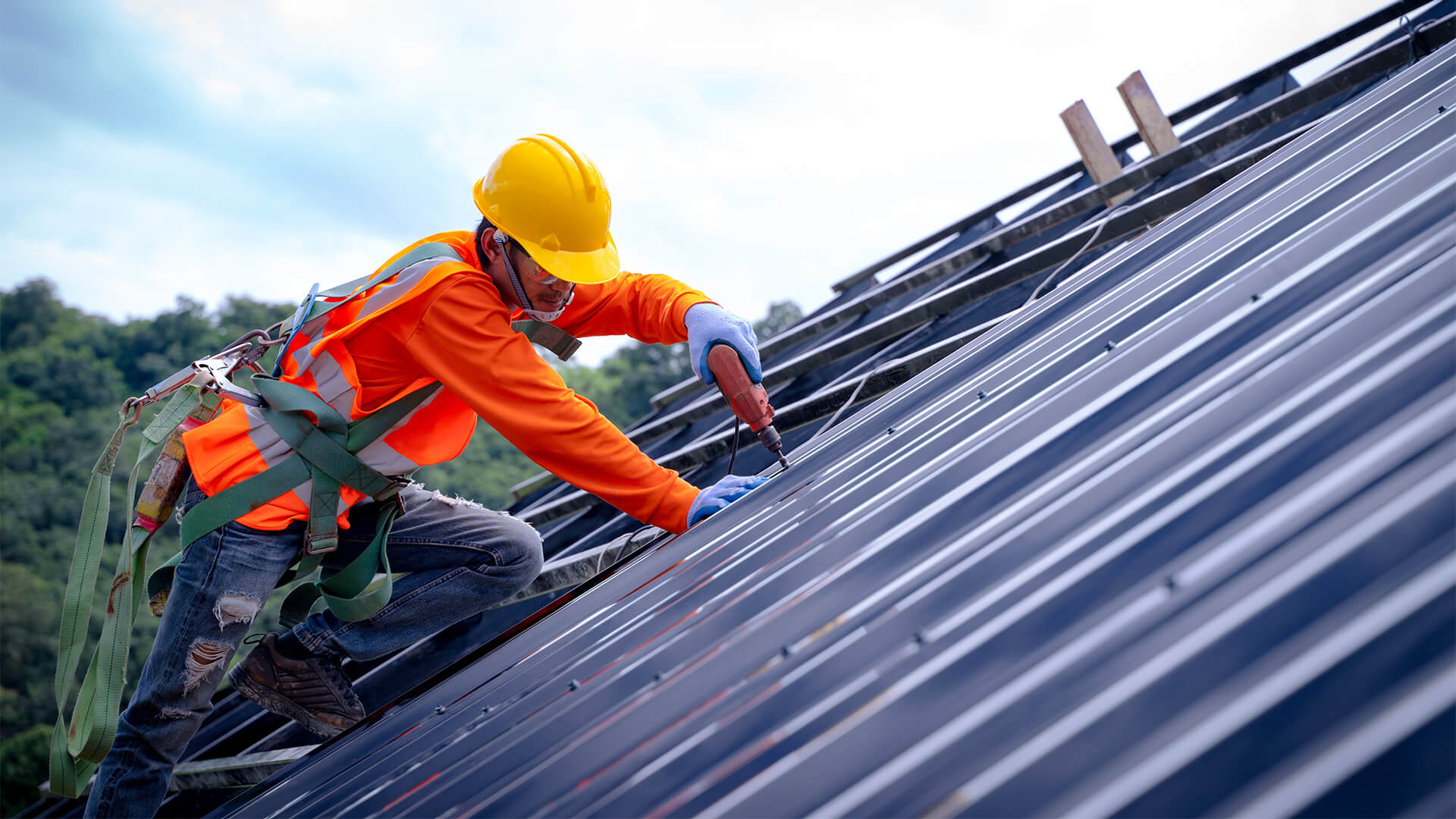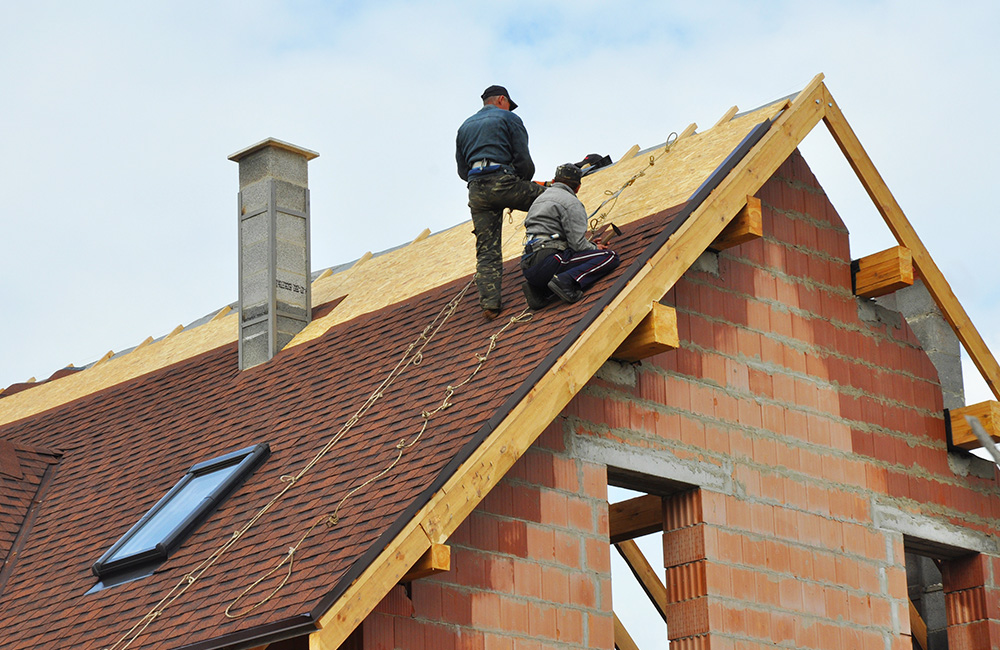Roofing Oahu: Expert Roofing Contractors for Your Oahu Residential property
Wiki Article
Recognizing the Different Kinds Of Roofs: A Comprehensive Overview for Homeowners
With a range of alternatives-- varying from the typical gable to the modern flat-- each type offers special benefits and obstacles that ought to align with the house owner's details needs and environmental factors to consider. As we check out the intricacies of various roof types, it becomes apparent that one size does not fit all; the appropriate selection might surprise you.Saddleback Roof
Gable roofings, identified by their triangular form, are among one of the most preferred roof styles because of their simpleness and effectiveness in shedding water and snow. This style includes two sloping sides that fulfill at a ridge, allowing for effective water drainage and minimizing the risk of water accumulation. The high pitch generally related to saddleback roofs improves their capability to handle hefty precipitation, making them suitable for numerous climates.In enhancement to their useful benefits, saddleback roofs supply visual flexibility. They can be adjusted to numerous building styles, from standard to contemporary homes. The layout can likewise fit added features such as dormer windows, which boost natural light and ventilation in the attic room room.
Moreover, gable roof coverings supply enough space for insulation, adding to power performance. Homeowners can select from a range of roof covering materials, including asphalt shingles, metal, and tiles, even more boosting customization alternatives.
Despite their benefits, gable roofing systems may need added assistance in locations susceptible to high winds or heavy snowfall. Overall, the saddleback roof continues to be a popular selection as a result of its blend of capability, durability, and aesthetic appeal.
Flat Roofs
Flat roofings are usually identified for their minimalist design and practical applications, especially in commercial and industrial settings (oahu roofing). These roofs feature a horizontal or almost horizontal surface area, which permits simple construction and versatile room usage. While they may do not have the visual appeal of pitched roof coverings, flat roofing systems provide various benefits, especially in metropolitan environments where making the most of space is crucialOne of the primary advantages of flat roofing systems is their ease of access. Property owners can make use of the roof covering room for numerous purposes, such as rooftop yards, terraces, or solar panel installations. Additionally, level roof coverings are generally extra cost-efficient to maintain and mount compared to their sloped counterparts, as they call for fewer materials and labor.
However, level roofings do existing certain difficulties. Proper drainage is important to prevent water pooling, which can cause leaks and architectural damage. Therefore, selecting high-quality waterproofing materials and routine examinations are critical for making certain longevity. Common products used for flat roof coverings include built-up roofing (BUR), modified bitumen, and single-ply membranes, each offering unique benefits. Overall, flat roofing systems function as a versatile and functional choice for several homeowners and companies alike.
Hip Roofing Systems
Hip roof coverings are characterized by their sloped sides that assemble on top, creating a ridge. This design is distinctive from saddleback roofs, as all 4 sides of a hip roof incline downwards towards the wall surfaces, offering a more steady structure. The angle of the slopes can differ, permitting flexibility in building looks and functionality.One of the key advantages of hip roofs is their roofers oahu capability to stand up to heavy winds and damaging weather. The sloped surfaces allow better water drainage, minimizing the danger of leakages and water damages. Furthermore, hip roofs provide increased attic room area, which can be used for storage or perhaps converted right into livable locations.
Nevertheless, constructing a hip roof can be more intricate and expensive than less complex roofing system types, such as saddleback roofs. The added material and labor associated with producing the slopes and making sure correct structural integrity can bring about higher expenses. Regardless of these drawbacks, numerous house owners favor hip roofings for their longevity, aesthetic appeal, and possibility for energy efficiency.
Mansard Roof Coverings
Mansard roof coverings, usually acknowledged by their distinct four-sided design, attribute two slopes on each side, with the reduced slope being steeper than the top. This building design, stemming from France in the 17th century, is not only visually enticing but useful, as it makes the most of the functional room in the top floorings of a building. The high lower incline enables for even more headroom, making it an optimal option for loft spaces or attic rooms, which can be exchanged living rooms.Mansard roofings are defined by their adaptability, suiting numerous building styles, from conventional to modern. They can be built with different products, consisting of asphalt shingles, slate, or metal, providing property owners with a series of alternatives to match their choices and budget plans. Additionally, the design enables the integration of dormer home windows, enhancing all-natural light and air flow in the upper degrees.
Nevertheless, it is important to take into consideration the prospective downsides. Mansard roofs may call for more maintenance because of the complexity of their design, and their steep slopes can be challenging for snow and rain overflow. Overall, mansard roofings combine beauty with usefulness, making them a prominent option among property owners seeking unique building attributes.
Dropped Roofing Systems
As house owners significantly look for simpleness and performance in their architectural layouts, dropped roofings have actually become a prominent selection. Identified by a solitary sloping airplane, a shed roof covering offers a minimal aesthetic that complements numerous home styles, from contemporary to rustic.Among the primary benefits of a shed roofing system is its straightforward building and construction, which typically translates to lower labor and material expenses. This style permits efficient water drain, reducing the danger of leaks and water damage. Furthermore, the upright incline offers ample area for skylights, boosting natural light within the interior.
Dropped roofs additionally supply convenience in terms of usage. They can be effectively integrated right into additions, garages, or exterior structures like sheds and structures. Moreover, this roofing system style can suit various roofing materials, including steel, asphalt tiles, or also green roofings, aligning with environment-friendly efforts.
However, it is necessary to think about regional climate problems, as heavy snow tons might demand changes to the roofing system's angle or structure. On the whole, lost roofing systems present a useful and visually pleasing alternative for home owners wanting to take full advantage of capability without jeopardizing design.
Final Thought


Gable roof coverings, identified by their triangular shape, are among the most preferred roof styles due to their simpleness and performance in dropping water and snow. oahu roofing. The high pitch commonly associated with gable roofs boosts their capacity to manage heavy rainfall, making them appropriate for various environments
While they may do not have the aesthetic allure of pitched roof coverings, level roofs use many benefits, especially in urban settings where maximizing room is critical.

Report this wiki page